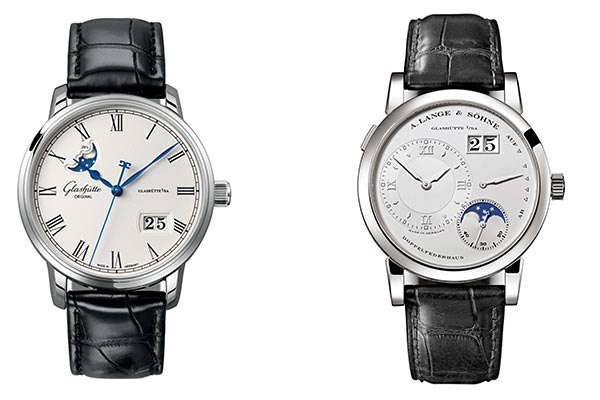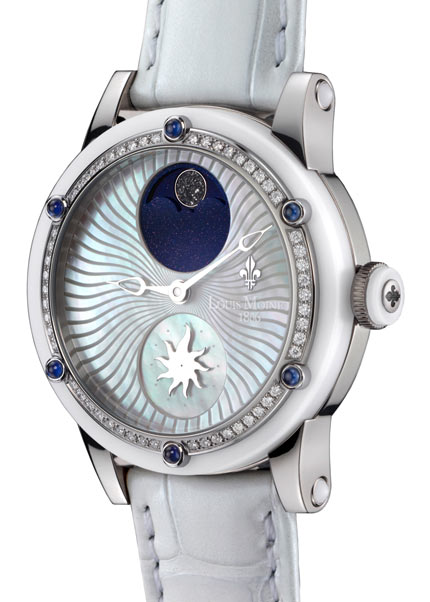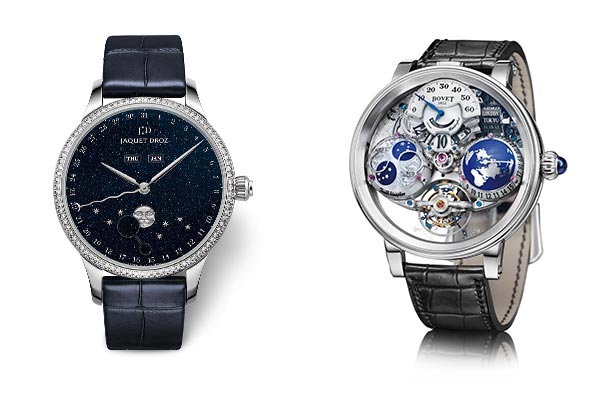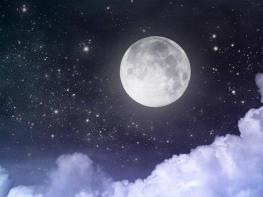Watches can be made in any number of shapes – round, square, rectangular... the list goes on. But a moon phase is more complicated. Like it or not, the moon is round, and its movements follow an unchanging pattern in an unchanging sky (at least, we hope so...). Which means that there is little room for artistic licence.
Nevertheless, watchmakers continue to bring all their talents to bear to come up with increasingly ingenious solutions. As patents come into the public domain and new materials are developed, the latest generation of watches can offer a refreshingly different take. How?
Wandering moon
The first variable is location. The vast majority of moon phases are located at 6 o’clock, but a few rare watchmakers site it triumphantly right in the centre of the dial. Perrelet blazed the trail, with its aptly named Big Central Moonphase. Perrelet’s cousin L. Leroy, related through IMH, also brought out an Osmior built on the same principle, back in the day. The idea of a moon phase display at 12 o’clock is not a new one (look at Cartier’s 1987 Pasha), but opening up the dial was a genuine innovation.
In the same vein, Harry Winston recently introduced a 36 mm Premier Moon Phase with the moon in the geometric centre of the dial – a move as bold as it is aesthetically pleasing. Baume & Mercier performed the same exercise with the more affordable women’s Classima moon phase.

There are even some more exotic placings to be found, mainly among the German watchmakers. Why? Impossible to say. But take a look at IWC (Portofino 5251, at 3 o’clock), A. Lange & Söhne (moon at 7 o’clock on the Lange 1 Tourbillon Perpetual Calendar Handwerkskunst, and at 5 o’clock on the Grand Lange 1 Moonphase), and Glashütte Original (10 o’clock on the Senator Panorama Date Moon Phase).

Cosmic moon
The second variable is materials. Louis Moinet is a past master in the art of interstellar dials. On the Stardance, the moon is made of a meteorite fragment, the Enstatite EH3, which is naturally rich in nano-diamonds. The company repeated the exercise with the AstroMoon, whose eponymous complication is also made out of genuine lunar meteorite fragments. It’s both poetic and unique.

There is also the beautifully accomplished Lebeau-Courally Phase de Lune, which to date has the only moon display created entirely in grand feu enamel. It’s a delicate exercise on a very small surface, but produces an incredible representation of the irregular lunar surface.
Back on Earth, mineral moons are more common. Examples are to be found with Piaget (640P movement in lapis lazuli), the Chanel J12 Moonphase (aventurine) and Omega (Speedmaster Moonphase in aventurine and mother-of-pearl).

Unclassifiable moon
The third category is for the bolder developments that are impossible to pigeonhole. One example is Cartier’s “moon on demand”. In the Rotonde de Cartier Earth and Moon, the wearer can choose to display the moon phase by pressing a pusher, at which point a moon phase disc moves into position above the tourbillon. It’s both ingenious and creative.
Over at Bovet, the Shooting Star features two fixed circles for the northern and southern hemispheres, over which the moon rotates, showing how it looks from both these viewpoints. Finally, Jaquet Droz favours a fixed moon that is gradually eclipsed by a moving paddle. It’s an original way of looking at it, even though it’s actually closer to what we generally see from Earth.










